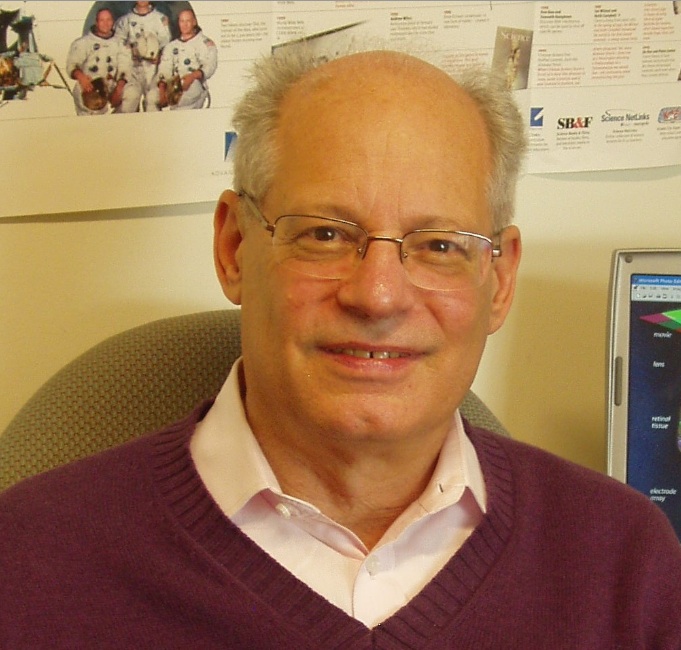|

|
A Biological Pixel Detector
| Abstract: |
The back of the eye is lined by an extraordinary biological pixel detector, the retina. This living neural network is able to extract vital information about the external visual world, and transmit this information in a timely manner to the brain. In this talk, after an introduction to retinal architecture, I will describe how we measure the functional properties of the retina, show what we have learned about its functional organization, and discuss studies aimed at guiding the design of retinal prosthetic devices. I will then briefly describe some of our on-going technology developments for neurobiology. This project was inspired by the development of silicon microstrip detectors for high energy physics experiments, including the search for the Higgs Boson. |
| Speaker: |
Alan Litke - University of California Santa Cruz |
| Speaker Bio: |
 Alan Litke became intrigued by the question "What happens when matter annihilates anti-matter?" as a result of an exercise on electron-positron annihilation in a course on Quantum Field Theory. This led to a Ph. D. thesis and a series of electron-positron colliding beam experiments at the Cambridge Electron Accelerator, SLAC, DESY and CERN. He became intrigued by the question "How does the brain work?" as he watched his kids learn to crawl, walk and talk. This led to work on technology development for neuroscience and a set of experiments on neural systems. He now divides his time between the ATLAS experiment at CERN and research in neurobiology. Alan Litke became intrigued by the question "What happens when matter annihilates anti-matter?" as a result of an exercise on electron-positron annihilation in a course on Quantum Field Theory. This led to a Ph. D. thesis and a series of electron-positron colliding beam experiments at the Cambridge Electron Accelerator, SLAC, DESY and CERN. He became intrigued by the question "How does the brain work?" as he watched his kids learn to crawl, walk and talk. This led to work on technology development for neuroscience and a set of experiments on neural systems. He now divides his time between the ATLAS experiment at CERN and research in neurobiology. |
| Poster Link: |
Poster |
| Presentation: |
|
|
 Alan Litke became intrigued by the question "What happens when matter annihilates anti-matter?" as a result of an exercise on electron-positron annihilation in a course on Quantum Field Theory. This led to a Ph. D. thesis and a series of electron-positron colliding beam experiments at the Cambridge Electron Accelerator, SLAC, DESY and CERN. He became intrigued by the question "How does the brain work?" as he watched his kids learn to crawl, walk and talk. This led to work on technology development for neuroscience and a set of experiments on neural systems. He now divides his time between the ATLAS experiment at CERN and research in neurobiology.
Alan Litke became intrigued by the question "What happens when matter annihilates anti-matter?" as a result of an exercise on electron-positron annihilation in a course on Quantum Field Theory. This led to a Ph. D. thesis and a series of electron-positron colliding beam experiments at the Cambridge Electron Accelerator, SLAC, DESY and CERN. He became intrigued by the question "How does the brain work?" as he watched his kids learn to crawl, walk and talk. This led to work on technology development for neuroscience and a set of experiments on neural systems. He now divides his time between the ATLAS experiment at CERN and research in neurobiology.
